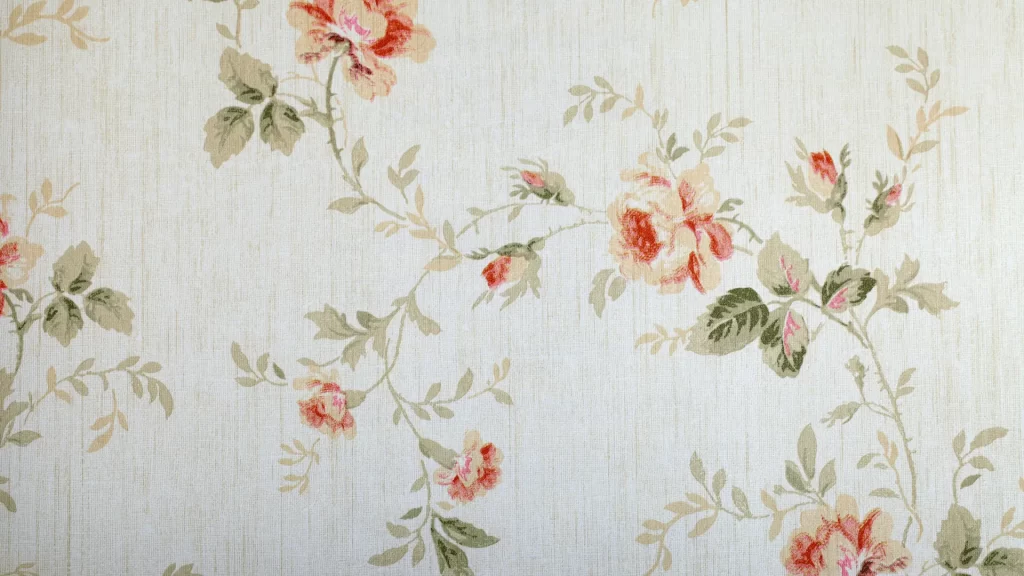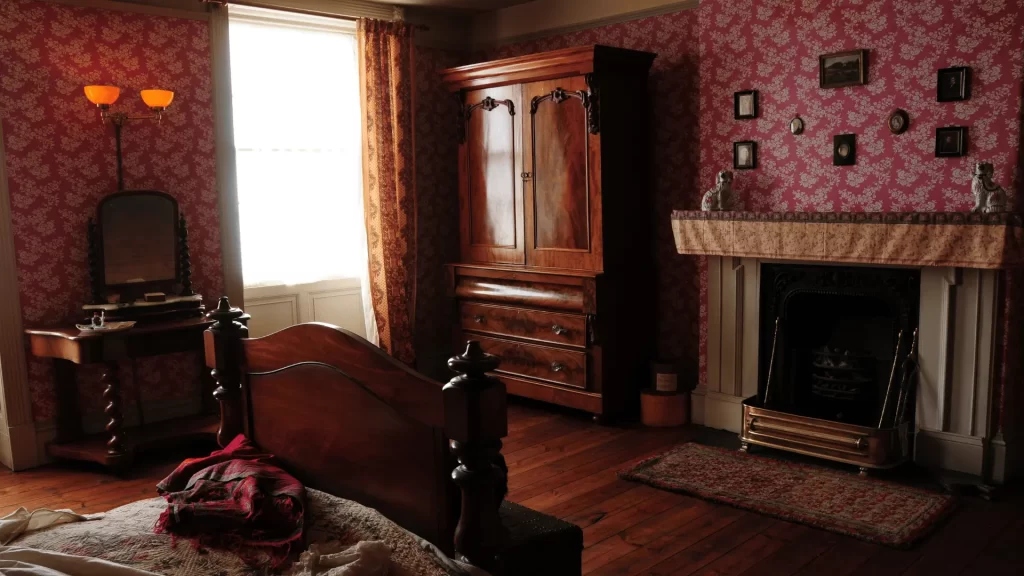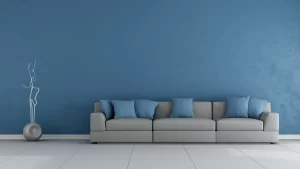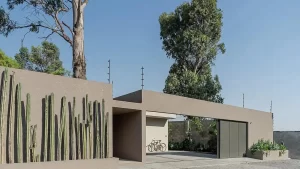Victorian style houses are known for their ornate and grand exterior design, but their interiors are equally as impressive. The interior design of Victorian style houses is characterized by a rich mix of decorative elements, including patterned wallpaper, stained glass windows, and elaborate moldings. In this post, we will take a closer look at the unique features of Victorian style interiors, exploring their historical context, key design elements, and contemporary interpretations. Whether you are a fan of classic Victorian style or simply looking for some interior design inspiration, read on to learn more about the distinctive and luxurious interiors of Victorian style houses.
Historical Context
To understand the unique interior design of Victorian style houses, it is important to understand the historical context in which this style emerged. The Victorian era, which lasted from 1837 to 1901, was a time of great change and innovation in both Europe and the United States. This era saw the rise of industrialization, mass production, and consumer culture, as well as major social and political upheavals, including the American Civil War and the Industrial Revolution.
During this time, wealthy homeowners began to embrace increasingly opulent and decorative interior design styles, as a way of showcasing their wealth and status. Victorian style interiors were inspired by a range of design influences, including Gothic Revival, Rococo, and Orientalism, resulting in an eclectic mix of ornate design elements. With the increasing availability of mass-produced furniture and decorative objects, Victorian style interiors became more accessible to the middle class, and this style remained popular well into the 20th century.
Today, Victorian style interior design remains popular among homeowners and designers who appreciate the ornate and grandiose nature of this style, while also finding ways to update it for contemporary living.
Key Elements of Victorian Style Interiors
Victorian style interiors are characterized by a rich mix of decorative elements that create a luxurious and ornate atmosphere. Here are some key design elements that are often found in Victorian style interiors:
- Elaborate Moldings and Millwork: Victorian homes are known for their intricate woodwork, including ornate moldings, wainscoting, and ceiling medallions.
- Richly Patterned Wallpaper: Bold and colorful wallpaper was popular in Victorian homes, often featuring floral, damask, or geometric patterns.
- Ornate Lighting Fixtures: Chandeliers, wall sconces, and table lamps were often elaborate and ornate, featuring crystals, beads, or other decorative elements.
- Stained Glass: Victorian homes often featured stained glass windows and doors, which added a colorful and decorative touch to interior spaces.
- Patterned Textiles: Heavy drapery, upholstery, and throw pillows often featured intricate patterns and textures, such as brocade, velvet, or lace.
- Rich Color Palette: Victorian interiors were often decorated in rich jewel tones and deep, saturated hues, including burgundy, navy, emerald green, and royal purple.
- Carved Wood Furniture: Victorian style furniture often featured elaborate carvings and ornate details, such as claw feet, finials, and floral motifs.
- Decorative Objects: Victorian interiors were often filled with decorative objects such as figurines, vases, and statuettes, often made from fine materials like porcelain or crystal.
By incorporating these design elements into a space, it is possible to create a Victorian style interior that is both luxurious and elegant.
Walls and Ceilings
Walls and ceilings are important elements in Victorian style interiors, and they are often decorated in ways that add to the luxurious and ornate atmosphere of the space.
One key feature of Victorian interiors is the use of patterned wallpaper. Victorian wallpaper often featured bold, colorful patterns, such as floral or geometric designs, and was used to add visual interest and depth to a room. In addition to wallpaper, Victorian interiors also featured wainscoting and other decorative moldings, which were often painted in a contrasting color to the wallpaper.
Ceilings in Victorian style houses were often highly decorated as well. Ceiling medallions, which were typically made of plaster or wood, were used to highlight light fixtures and add visual interest to the ceiling. Crown moldings, which were often highly ornate, were used to frame the perimeter of the ceiling and create a sense of grandeur.
Other decorative elements that were used on walls and ceilings in Victorian style interiors included decorative murals, stenciling, and trompe l’oeil painting techniques. These techniques were used to create the illusion of depth and texture, and to add a sense of drama to the space.
Overall, the walls and ceilings in Victorian style interiors were designed to create a sense of grandeur and opulence, using a mix of pattern, color, and decorative molding techniques. By incorporating these elements into a modern home, it is possible to recreate the luxurious and ornate atmosphere of Victorian style interiors.

Flooring
Flooring is an important element in Victorian style interiors, and it is often used to create a sense of luxury and grandeur.
One of the most common flooring materials used in Victorian style interiors is hardwood. Rich, dark-stained woods like mahogany, cherry, and oak were popular, and the planks were often wide and featured decorative inlays or borders. Parquet floors, which are made up of small wooden pieces arranged in geometric patterns, were also common in Victorian homes.
In addition to hardwood, other materials that were used for flooring in Victorian style interiors included ceramic or porcelain tile, marble, and carpet. Ceramic or porcelain tiles were often used in entryways or other high-traffic areas, and were often decorated with intricate patterns or mosaics. Marble, which was highly prized for its luxurious look, was used in grand entryways or formal living areas.
Carpet was also commonly used in Victorian homes, and it was often highly patterned and made of rich materials like wool or silk. Victorian-era carpeting often featured intricate patterns, such as floral motifs or geometric designs, and was sometimes made in bright colors like red or green.
Overall, Victorian style flooring was designed to create a sense of luxury and grandeur, using a mix of high-quality materials and intricate patterns. By incorporating these flooring elements into a modern home, it is possible to create a space that is both elegant and timeless.

Windows and Doors
Windows and doors are important design elements in Victorian style interiors, and they were often highly decorative and ornate.
One common feature of Victorian windows is the use of stained glass. Stained glass windows were used to add color and decorative interest to a room, and they were often designed with intricate patterns and images. Large bay windows, which provided ample natural light and created a sense of spaciousness, were also common in Victorian homes.
Victorian-style doors were often highly decorative as well, featuring ornate carvings or intricate moldings. Double doors, which provided a grand entrance to a room, were also popular. Pocket doors, which slide into the wall and are hidden from view when not in use, were another common feature of Victorian-style interiors.
Other decorative elements that were used on windows and doors in Victorian style interiors included decorative hardware, such as elaborate doorknobs and hinges, as well as decorative moldings and trim.
Overall, Victorian-style windows and doors were designed to be both functional and highly decorative, using a mix of intricate design elements and high-quality materials to create a grand and luxurious atmosphere. By incorporating these design elements into a modern home, it is possible to create a space that is both elegant and timeless.
Furniture and Decor
Furniture and decor are key elements of Victorian style interiors, and they were often designed to be ornate and grand.
Furniture in Victorian style interiors was often made of high-quality wood and featured intricate carvings and decorative moldings. Large, plush sofas and chairs were common, and were often upholstered in rich fabrics like velvet or brocade. Other furniture pieces that were commonly found in Victorian-style interiors included heavy wood desks, ornate mirrors, and tall, narrow cabinets called étagères.
Decorative elements in Victorian style interiors were often designed to be eye-catching and grand. One common feature was the use of large, ornate mirrors, which were often framed in elaborate, decorative moldings. Another popular decorative element was the use of decorative screens or room dividers, which were often made of wood and featured intricate carvings or patterns.
Other decorative elements in Victorian style interiors included chandeliers, which were often large and ornate, and featured crystal or glass pendants. Decorative vases, figurines, and other decorative objects were also commonly used, and were often made of high-quality materials like porcelain or glass.
Overall, Victorian style furniture and decor were designed to create a grand and opulent atmosphere, using a mix of high-quality materials, ornate designs, and rich fabrics. By incorporating these design elements into a modern home, it is possible to create a space that is both luxurious and timeless.

Color Palette
The color palette of Victorian style interiors was often rich and bold, and was designed to create a sense of opulence and grandeur.
One of the most common color schemes used in Victorian style interiors was the use of rich, dark colors like deep red, forest green, and navy blue. These colors were often used on walls and upholstery, and were used to create a sense of warmth and intimacy.
Other common colors used in Victorian style interiors included gold, burgundy, and dark brown. These colors were often used as accents, in the form of decorative molding or trim, or in the upholstery of furniture.
In addition to bold colors, Victorian style interiors often incorporated patterned fabrics and wallpapers. Floral patterns were common, as were intricate geometric patterns. These patterns were often used on wallpaper, upholstery, and curtains, and were used to add texture and interest to a room.
Overall, the color palette of Victorian style interiors was designed to create a sense of luxury and grandeur, using a mix of bold, rich colors and intricate patterns. By incorporating these colors into a modern home, it is possible to create a space that is both elegant and timeless.
Contemporary Interpretations
Contemporary interpretations of Victorian style interiors often incorporate elements of the original style, while also modernizing the design to create a more current and livable space.
One approach to modernizing Victorian style interiors is to incorporate bold colors and patterns in a more subtle way. For example, using a bold patterned wallpaper on a single accent wall can add interest to a room without overwhelming the space. Similarly, using a single bold color on a sofa or chair can create a focal point in the room without making it feel too heavy.
Another approach to contemporary Victorian style interiors is to incorporate elements of the style in a more minimalist way. For example, incorporating a single ornate piece of furniture into an otherwise modern space can add a touch of Victorian style without making the room feel too ornate. Similarly, incorporating a stained glass window into a modern space can add a touch of color and interest to the room without overwhelming it.
In addition, contemporary Victorian style interiors often incorporate modern materials and textures to create a more updated look. For example, combining a Victorian-style sofa with a modern metal coffee table can create an interesting contrast that feels fresh and modern.
Overall, contemporary interpretations of Victorian style interiors aim to create a space that is both elegant and modern, using a mix of classic design elements and modern materials and textures. By incorporating these elements into a modern home, it is possible to create a space that is both timeless and current.

In conclusion, Victorian style interiors are characterized by their opulent and ornate design, rich color palette, and intricate decorative elements. From patterned wallpaper and stained glass windows to plush furniture and decorative moldings, these interiors are designed to create a grand and luxurious atmosphere.
While the original Victorian style houses may be too ornate and heavy for some modern homes, contemporary interpretations of the style aim to incorporate the key elements of the design in a more subtle and minimalist way. By combining classic design elements with modern materials and textures, it is possible to create a space that is both timeless and current.
Whether you are looking to incorporate bold colors and patterns into your space, or simply add a touch of Victorian elegance to a modern home, there are many ways to incorporate the key elements of Victorian style interiors into your own interior design.




